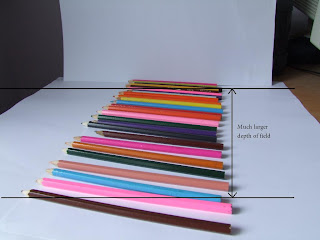For this exercise I am asked to find a subject with a large, even background. Whilst at the Weald and Downland open air museum I came across a house that had a large uncluttered wall with a door in it. Using the door as the subject and the brick wall as the large even background I started to take a series of photos.
 |
| Photo #1 |
Photo #1 is the natural way I would shoot this subject.
 |
| Photo #2 |
Photo #2 is with the subject right in the centre.
 |
| Photo #3 |
Photo #3 is with the subject just off centre.
 |
| Photo #4 |
Photo #4 is with the subject placed in the bottom left corner.
Going through these photos my preference would have to be photo #1 as it is the more natural of the shots.
My second preference would be photo #2 as having the subject right in the middle really draws your attention to it. The background seems to be there just to draw your attention to the door and doesn't clutter up the photo.
Preference 3 would probably be photo #3 for very similar reasons as my second preference. The door is quite clearly the more dominant subject with the background there to enhance it.
Finally, photo #4. Of the four photos this just didn't work for me. It's not clear what the subject is and the background has ceased to become a background and is now quite prominent in the photo. My eye was draw to the door, the windows and the dark roof and I felt an emptiness in the middle of the picture.














































